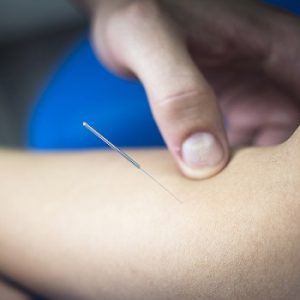
More evidence that low-calorie sweeteners are bad for your health
Studies show that artificial sweeteners can raise the risk of hypertension, metabolic syndrome, type 2 diabetes and heart disease, including stroke.

Natural Health News — A new study has shown that use of acupuncture in emergency departments is a safe and effective alternative to pain-relieving drugs.
What is claimed to be the world’s largest randomised controlled trial of the use of acupuncture, was conducted in the emergency departments of four Melbourne hospitals. It showed that in some patients acupuncture was as effective as pain medicine in providing long-term relief for patients who came to emergency in considerable pain.
But say the researchers from RMIT University in Melbourne, Australia, pain management remains a critical issue, with neither treatment providing adequate immediate relief.
Lead investigator Professor Marc Cohen, from RMIT’s School of Health and Biomedical Sciences, said pain was the most common reason people came to emergency, but was often inadequately managed.
» A large randomised controlled trial in Australia has shown that acupuncture is as effective as conventional drugs for delivering emergency pain relief.
» While acupuncture is often used for pain relief in non-emergency settings, it is still rare in hospital emergency departments.
» Based on their findings the researchers say that acupuncture can be reasonably added to the approaches used in emergency settings.
As good as drugs
The study, published in the Medical Journal of Australia and funded by a grant from the National Health and Medical Research Council, involved 528 patients with acute low back pain, migraine or ankle sprains who presented at the emergency departments of the Alfred Hospital, Cabrini Malvern, Epworth Hospital and Northern Hospital between January 2010 and December 2011.Patients who identified their level of pain as at least 4 on a 10-point scale randomly received one of three types of treatment: acupuncture alone, acupuncture plus pharmacotherapy or pharmacotherapy alone.
One hour after treatment, less than 40% of patients across all three groups felt any significant pain reduction (2 or more pain points), while more than 80% continued to have a pain rating of at least 4.
But 48 hours later, the vast majority found their treatment acceptable, with 82.8 per cent of acupuncture-only patients saying they would probably or definitely repeat their treatment, compared with 80.8 per cent in the combined group, and 78.2 per cent in the pharmacotherapy-only group.
“Some Australian emergency departments already offer acupuncture when trained staff are available but further studies are needed on ways to improve pain management overall in emergency departments, and the potential role for acupuncture in this,” Cohen said.
A need for options
“While acupuncture is widely used by practitioners in community settings for treating pain, it is rarely used in hospital emergency departments,” Cohen said.
“Emergency nurses and doctors need a variety of pain-relieving options when treating patients, given the concerns around opioids such as morphine, which carry the risk of addiction when used long-term.
“Our study has shown acupuncture is a viable alternative, and would be especially beneficial for patients who are unable to take standard pain-relieving drugs because of other medical conditions.
“But it’s clear we need more research overall to develop better medical approaches to pain management, as the study also showed patients initially remained in some pain, no matter what treatment they received.”

Please subscribe me to your newsletter mailing list. I have read the
privacy statement